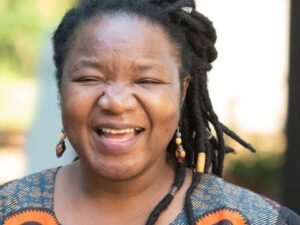Money has always been more than numbers. It is power, freedom, and security. For centuries, women were excluded from financial systems, denied property rights, or considered incapable of handling wealth. But times are changing, and one of the most radical, under-discussed shifts happening today is the rise of sisterhood investments—women coming together to pool money, share knowledge, and build collective wealth.
From investment clubs to crypto groups, from community lending circles to women-focused mutual funds, this trend is quietly rewriting how wealth is created and distributed. It is also reshaping the way women think about financial independence.
This is not just about making money. It is about rewriting history. It is about women refusing to wait for a seat at the table and instead building their own tables.
Why Sisterhood Investments Are Rising
The financial world has long been dominated by men. According to a World Bank report, women globally still earn about 20 percent less than men, and only one in three women feel confident about their financial literacy. Add to that the gender wealth gap: a 2021 McKinsey study found that women globally own just 32 percent of global wealth, despite making up half the population.
But there’s a countertrend. In recent years, more women are recognizing that individual efforts are not enough to close these gaps. They are turning to collective models of investing, built on trust, collaboration, and shared goals.
The logic is simple: what one woman might hesitate to do alone, a group of women can do together.
- Risk-sharing: Investing feels less intimidating when it’s done with others.
- Knowledge-sharing: Women are teaching each other, swapping financial strategies, and learning together.
- Support system: Money conversations, once taboo, are becoming a safe space in sisterhood circles.
The Old Tradition of Women Pooling Money
Interestingly, women pooling resources is not new. Across cultures, women have relied on group finance for centuries:
- In Africa, susu clubs and rotating savings groups allowed women to borrow and lend collectively.
- In India, chit funds and self-help groups (SHGs) have long helped rural women finance small businesses or emergencies.
- In Latin America, tandas and cundinas—informal savings clubs—have supported families for generations.
The difference today is that these models are evolving into modern, digital, and wealth-focused movements. Instead of only saving for survival, women are investing for growth—stocks, real estate, startups, and even cryptocurrency.
The Rise of Female-Only Investment Clubs
Investment clubs are not new, but their character is changing. Traditionally, they were often male-dominated, with golf-course deals and closed-door decision-making. Now, women are creating female-only clubs that emphasize inclusivity and education.
Take Ellevest, the female-focused digital investment platform founded by Sallie Krawcheck. While not exactly a club, its community model and resources have inspired countless women to think differently about wealth. In the U.S., groups like Women’s Investment Network and Smart Women Invest are creating safe spaces where women share portfolios, co-invest, and demystify Wall Street.
These clubs are powerful because they break a long-standing cultural silence. For decades, women were taught not to talk about money—it was “unfeminine,” even “impolite.” Investment clubs flip this script: now, financial literacy is a bonding tool.
As one Reddit user shared in a women-and-money thread: “I was terrified of investing. Then I joined a women-only club in my city. We each put in $200 a month. Not only am I learning stocks, but I also feel accountable and empowered.”
Sisterhood in Crypto and Digital Assets
Cryptocurrency may feel like the ultimate boys’ club, but women are carving out their own spaces here too.
- Groups like Women in Blockchain, Crypto Queens, and SheFi are giving women entry points into an intimidating world.
- According to Gemini’s 2022 report, women make up 26 percent of crypto owners in the U.S.—a number that’s steadily growing.
- Younger women in Gen Z and Millennials are especially drawn to crypto, seeing it as a way to bypass traditional financial gatekeepers.
Crypto sisterhoods are not just about investment; they are about education and safety. Many women admit they felt too intimidated to enter male-dominated crypto spaces where jargon, arrogance, and even dismissiveness kept them out. All-women groups provide translation, reassurance, and the freedom to ask “basic” questions without ridicule.
A young woman on a Discord channel of a women’s crypto group put it simply: “If I didn’t find this space, I’d still think Bitcoin was just some scam. Now I’ve made my first NFT sale and I’m investing in DeFi with friends I trust.”
Mutual Funds and Women-Focused Portfolios
Sisterhood investing isn’t always grassroots. Even large financial institutions are recognizing the power of gender-specific investing.
Funds like the SHE ETF (which tracks companies with strong gender diversity in leadership) or women-focused mutual funds are growing. Research backs this up: a Morgan Stanley study found that companies with more women on their boards outperform those without by 3.1 percent annually.
So when women invest collectively in funds that prioritize gender equity, they are not only building wealth for themselves—they are also pushing corporations to value diversity.
Beyond Money: The Psychological Shift
Perhaps the most radical aspect of sisterhood investing is not financial but psychological. For centuries, women have been subtly (and sometimes overtly) conditioned to believe that money is not “their domain.” Even wealthy women were often passive recipients of financial decisions made by husbands or fathers.
Sisterhood investments change that. They normalize women talking about money openly—their salaries, their investments, their fears. They also create accountability.
In sociology, this is called collective efficacy—the belief that people can achieve more together than alone. When applied to finance, it translates into something even deeper: the realization that money is not just survival, but agency.
The Stories Behind the Movement
Statistics tell one part of the story. But the soul of this movement lies in women’s personal experiences.
- Priya, 35, Bangalore: “I joined a WhatsApp group where 20 of us put in ₹5,000 a month. We vote on whether to invest in stocks, gold, or startups. It started as a savings idea, but now we are discussing angel investing. I never thought of myself as an investor until now.”
- Jessica, 29, New York: “I could never understand the stock market jargon. I felt dumb asking questions in co-ed spaces. Then I found a women’s investing circle. We meet monthly over wine and spreadsheets. I’ve doubled my savings in two years.”
- Aisha, 42, London: “For me, it’s less about returns and more about solidarity. I grew up in a family where women didn’t touch financial matters. Now, my teenage daughter sees me leading an investment group. That’s priceless.”
Challenges Women Still Face
It’s important to be honest: this movement is not without obstacles.
- Trust Issues: Collective money requires high trust. Not every group succeeds.
- Access Gaps: Rural women or those with lower incomes may struggle to participate.
- Financial Bias: Even today, women investors often face condescension in traditional financial circles.
- Time Constraints: Many women juggle work, family, and caregiving, leaving little time for active investing.
But despite these, the momentum is real. The Financial Alliance for Women reported that women’s wealth is expected to outpace men’s by 2030, with women controlling $93 trillion globally. Sisterhood investments are a key driver of this shift.
The Future of Wealth Is Feminine
So where is this heading? Experts believe that sisterhood-based investments will expand in several ways:
- Tech-Enabled Platforms: Apps tailored for women’s investment circles.
- Cross-Border Collaborations: Global sisterhood funds that connect women investors from different countries.
- Impact Investments: Women are more likely to invest in social and environmental causes. Future sisterhood funds will likely drive green and ethical investments.
- Next-Gen Mindset: Gen Z women are growing up unafraid to talk about money. For them, investing collectively may become the norm rather than the exception.
Why This Matters
This is bigger than finance. When women invest together, they close gaps that entire systems failed to close. They create safety nets for each other. They challenge a culture that has long sidelined them. And they pass down not just money, but financial literacy, confidence, and independence to the next generation.
Sisterhood investments are rewriting the story of wealth. For once, women are not waiting for permission. They are taking the pen, holding it together, and authoring a new financial future.
Conclusion
The story of women building wealth through sisterhood is one of quiet revolution. It is happening in living rooms, WhatsApp groups, Discord channels, and Zoom calls. It is happening in investment clubs, in crypto collectives, and in socially conscious funds.
What makes it revolutionary is not just the money. It is the message: we rise together.
As one woman put it in a financial literacy workshop: “When I invest alone, I feel scared. When I invest with sisters, I feel powerful.”
That is the essence of sisterhood wealth. Not fear. Not isolation. But power, shared and multiplied.










































